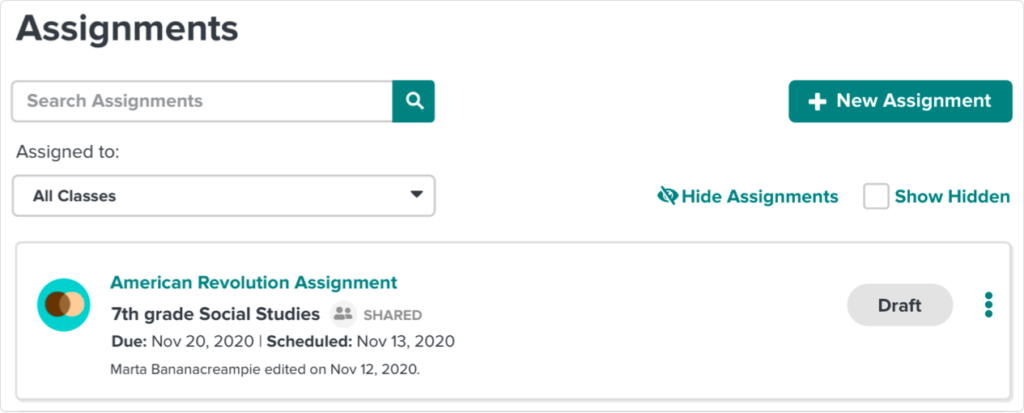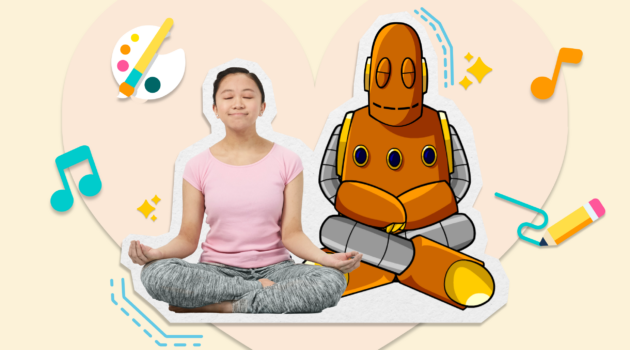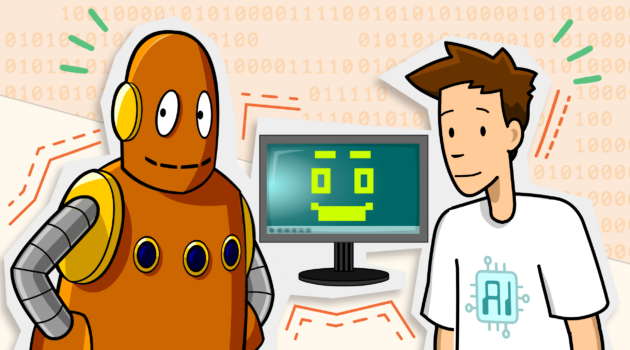New to BrainPOP
Inside BrainPOP’s New Co-Teacher Feature: Collaboration, Flexibility, and Choice

Say Hello to Co-Teachers
These days, a lot of learning happens online. With the shift to remote education, teacher communication has gone digital, too. The work of co-teaching has always spanned a number of contexts: from in-person conversations to digital workspaces to parallel teaching. No matter where the work happens, it’s critical for teachers to be in sync with each other and able to adapt quickly.
Now more than ever, co-teachers need collaboration tools that help them share their workload but that also make space to get work done on their own schedule. That’s why we’re thrilled to announce that co-teaching has come to BrainPOP!
Now teachers can easily add each other to shared classes, collaborate on assignments, and share the work of reviewing and grading student submissions. With co-teaching, educators can work together in a shared environment to create personalized experiences for their students. In fact, we designed the entire experience with individualized learning in mind.
Teacher-Centered Design
When schools first shut down in March, BrainPOP’s User Research Team kicked off a wave of research to learn more about how remote learning was changing people’s lives. We dug into incoming comments and requests, and also launched a three-week diary study where we followed the lives of eight teachers in inclusion and special ed classrooms across the country.
When we built co-teachers, UX designers and engineers were aiming to fundamentally improve the experience of teaching remotely.
Thea Hogarth, Lead UX Researcher at BrainPOP
While we knew the stresses of this shift were affecting entire school communities, we also became aware that it was taking an extreme toll on special education teachers and students alike. Additionally, we know that special educators often find themselves in co-teaching relationships of all stripes: creating and adapting lessons to be more inclusive, pulling out small groups of students for targeted interventions, coordinating with a constellation of other specialists to deliver individualized instruction, and the list goes on.
As the lead user resaercher here at BrainPOP, I wanted to make sure we didn’t just want to tack on another feature. When we built co-teachers, UX designers and engineers were aiming to fundamentally improve the experience of teaching remotely by focusing on one of the hardest-hit groups of educators. But rather than guessing at their needs, we invited specialists and co-teachers to show us. And the experience that we built corresponds to what we learned.
When getting in can be a problem, let colleagues open the door

It will come as a surprise to exactly no one that teachers were already writing in to request co-teaching before it was a glimmer in our eye. From the flood of comments we received in March, we learned that classroom teachers were tired of being gatekeepers to their BrainPOP classes and student data. They wanted assistants and specialists to be able to review student work and assignments on their own.
Through interviews and correspondence during our diary study, we also learned that sometimes they didn’t have their own BrainPOP accounts at all, let alone classes. So they depended on their colleagues for access to BrainPOP content and student work.
Enter invitations. With just a few clicks, a teacher can invite up to 10 co-teachers to join their class—no class codes or permissions needed. Co-teachers don’t even need to have BrainPOP accounts set up yet. As long as they work at the same school, they can get set up quickly with their own individual BrainPOP accounts, join classes, and start collaborating.
Equal access to student work

From write-in requests and interviews with teachers, we also learned that co-teachers need equal access to student work. When any pair of co-teachers (student teachers, team teachers, etc.) can see the same data, it becomes much easier to share the work of grading and make quick decisions while parallel teaching.
Many of the specialists we interviewed also expressed concerns about having enough data to truly understand what their students had learned or retained during the final months of the 2019–20 school year. They needed to be able to help revise individualized education plans (IEPs) for the coming year, but based on what? When specialists have access to student data, they have a better sense of each student’s progress towards their IEP goals and can make more informed decisions and recommendations about future interventions.
So when we say shared classes, we really mean it. All teachers associated with a class can see all the same student data and work. At a time when there is little data available on how students are really doing, improving teacher access to BrainPOP quiz scores and projects like Make-a-Movie is essential.
Create assignments that multiple teachers can edit and adapt

The more we learned about co-teaching, the clearer it became that the best relationships are built on a bedrock of trust. More than experience or skill, trust between co-teachers can have a profound impact on the quality of their teaching. So we wanted to make sure that our offering to co-teachers would, at minimum, not interfere with their sense of trust, and at best, facilitate that trust.
So when we talk about co-teachers collaborating on assignments, we know that they rely on each other to make appropriate adaptations for individual students or groups. Or to make last-minute edits to include some additional review of a tricky concept.
Shared assignments are easy to edit and clear about who made the last change. They are unique to that class, so any changes will not apply to duplicates in other classes with a different mix of teachers and students.
Creating co-teachers was a labor of love, and we hope you like it! Start collaborating with your co-teachers today.






